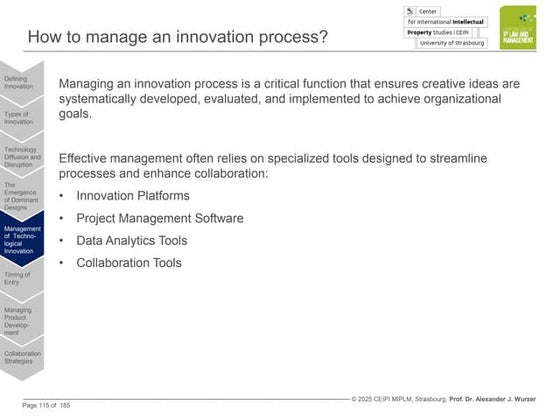Using Customized Descriptive Codes and Text Analysis to Measure Service Process and Enhance Value in Virtual Reference
- 1. Using Customized Descriptive Codes and Text Analysis to Measure Service Process and Enhance Value in Virtual Reference Christine Tobias - Reference & Technology Librarian - Michigan State University Libraries Service Process: Text Analysis: Virtual reference IS a valuable Why is virtual reference used? How are information needs expressed research service point!! ’é¦ In September 2010, a long-term assessment in virtual reference? Customized Descriptive Codes by Category plan was implemented to quantitatively measure service process in virtual reference. I am trying to IŌĆÖm just getting my feet ’é¦ Customized descriptive codes were created get to CINAHL wet. Maybe you could and defined in QuestionPoint, a web-based and I donŌĆÖt suggest a starting point? Is there no way to virtual reference software. know how to just search across Library Resources get there all the journals? ’é¦ Each question is assigned up to 3 codes based Library Services from here. Technology Help upon the initial question asked. Local Resources ’é¦ 3,550 descriptive codes were assigned How do I search for scholarly How do I use articles?? I linked through google between May 2011ŌĆōApril 2012. scholar to see what materials can be intralibrary loan on the website? Enhance Value: accessed through the library and it sends me to [URL] and I do not know Improve the user experience Measuring Service Process in Virtual Reference: Most Frequently Assigned Customized Descriptive Codes where to go from there. in virtual reference! Research Question ’é¦ Majority of questions received in Librarian: Is this the catalog Articles: Specific Journal/Citation virtual reference pertain to record you viewed? I can find the journal Patron: Well, I went through finding, accessing, and using Electronic Resources issue and the article. the e-resources page, but itŌĆÖs library resources for research. Book/Document Search But I canŌĆÖt find any way the same information, yes. ’é¦ Increase the transparency in to actually access the Databases presentation of library resources article, to get to the PDF or whatever. in the digital environment. Ready Reference ’é¦ Simplify website navigation and Journal Holdings content to increase findability of Circulation library resources. ’é¦ A systematic sample of 355 transcripts from May 2011-April ’é¦ Staff with librarians who will treat Public Services 2012 were reviewed. virtual reference as a valuable Citation Help ’é¦ Specific words and phrases used to convey information needs research service point to ensure 0 100 200 300 400 500 600 700 identified pain points in the virtual research experience. service quality. Copyright 2012 Christine L. Tobias. All rights reserved.

![Using Customized Descriptive Codes and Text Analysis
to Measure Service Process and Enhance Value in Virtual Reference
Christine Tobias - Reference & Technology Librarian - Michigan State University Libraries
Service Process: Text Analysis: Virtual reference IS a valuable
Why is virtual reference used? How are information needs expressed research service point!!
’é¦ In September 2010, a long-term assessment
in virtual reference?
Customized Descriptive Codes by Category
plan was implemented to quantitatively
measure service process in virtual reference. I am trying to IŌĆÖm just getting my feet
’é¦ Customized descriptive codes were created get to CINAHL wet. Maybe you could
and defined in QuestionPoint, a web-based and I donŌĆÖt suggest a starting point? Is there no way to
virtual reference software. know how to just search across
Library Resources
get there all the journals?
’é¦ Each question is assigned up to 3 codes based Library Services
from here. Technology Help
upon the initial question asked. Local Resources
’é¦ 3,550 descriptive codes were assigned How do I search for scholarly
How do I use
articles?? I linked through google
between May 2011ŌĆōApril 2012.
scholar to see what materials can be intralibrary loan on
the website?
Enhance Value:
accessed through the library and it
sends me to [URL] and I do not know Improve the user experience
Measuring Service Process in Virtual Reference:
Most Frequently Assigned Customized Descriptive Codes
where to go from there. in virtual reference!
Research Question ’é¦ Majority of questions received in
Librarian: Is this the catalog
Articles: Specific Journal/Citation virtual reference pertain to
record you viewed?
I can find the journal Patron: Well, I went through finding, accessing, and using
Electronic Resources
issue and the article. the e-resources page, but itŌĆÖs library resources for research.
Book/Document Search But I canŌĆÖt find any way the same information, yes. ’é¦ Increase the transparency in
to actually access the
Databases
presentation of library resources
article, to get to the PDF
or whatever. in the digital environment.
Ready Reference
’é¦ Simplify website navigation and
Journal Holdings content to increase findability of
Circulation
library resources.
’é¦ A systematic sample of 355 transcripts from May 2011-April ’é¦ Staff with librarians who will treat
Public Services
2012 were reviewed. virtual reference as a valuable
Citation Help ’é¦ Specific words and phrases used to convey information needs research service point to ensure
0 100 200 300 400 500 600 700
identified pain points in the virtual research experience. service quality.
Copyright 2012 Christine L. Tobias. All rights reserved.](https://image.slidesharecdn.com/alaannualposter2012-120621103830-phpapp01/85/Using-Customized-Descriptive-Codes-and-Text-Analysis-to-Measure-Service-Process-and-Enhance-Value-in-Virtual-Reference-1-320.jpg)















































